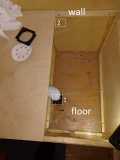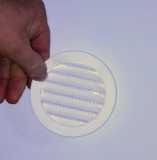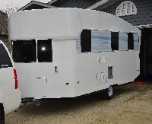Hi,
Looking for advice from all knowledgeable people here as to where to locate my (not so much composting) bucket toilet vent fan: on the floor or on the side wall.
I have "tested" my homemade bucket toilet and so far it seems to work great with no (for my nose) detectable smell. I tested with peat moss as a covering media.
I still want to add a vent with a computer fan similar to commercial composting units to keep any potential smell away and that is why this question is here.
I do not see huge difference between placing the vent on the floor or on the side due to only ~10 inch difference in elevation. I do not know if from thermal air stratification perspective both options will make a big difference for the exhaust computer fan efficiency. I do not have a good option to exhaust through the roof with this design, which is a standard in RV industry that is why I am only showing two options on the picture below for locating the exhaust fan: 1. on the floor and 2. on the trailer side wall.
On the floor is easier to make and further from the bed to hear the fan noise, if any. On the wall is what van conversion people do, but I do not like making holes on the side as I am concerned about road spray will be getting inside the vent more readily, but I have no experience with that, so looking for people who might have such vents on their trailer side. I am thinking of using the standard house soffit vent for this purpose, but open for advice here. The side wall vent location would be about 14" from the floor or 22" from the road level. Cannot place it higher than that.
What do you think the fan location should be between these two options shown below, on the wall or on the floor? And if on the wall is the soffit vent ok to use?
Thanks!









